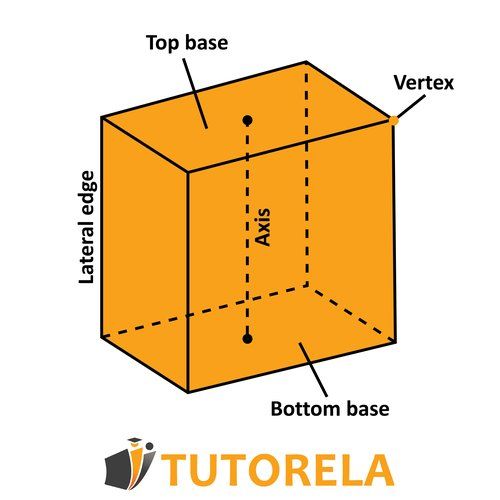The rectangular prism is a three-dimensional figure composed of rectangles.
Parts of a Rectangular Prism Practice Problems & Exercises
Master identifying faces, edges, vertices of rectangular prisms. Interactive practice problems with step-by-step solutions and visual diagrams.
- Identify and count the 6 faces of rectangular prisms accurately
- Distinguish between the 12 edges and their dimensions (length, width, height)
- Locate and count all 8 vertices where edges meet
- Calculate face diagonals connecting vertices on the same face
- Find internal diagonals connecting vertices on different faces
- Apply knowledge to solve real-world 3D geometry problems
Understanding Parts of a Cuboid
Parts of a Rectangular Prism
Every rectangular prism has:
faces -> rectangles that make up the rectangular prism.
edges -> (in length, width, and height).
vertices -> the corners where the edges meet.

Practice Parts of a Cuboid
Look at the cuboid below.
Which of the following answers is a face of the given cuboid?
Examples with solutions for Parts of a Cuboid
Identify which of the following line segments is the diagonal of the rectangular prism?
A box diagonal is a diagonal that passes between two vertices that are not connected,
meaning, the diagonal passes through the box, and not on one of its edges.
Let's see which of the segments in the answers passes entirely through the box from end to end.
AC, HF and FC are all diagonals that lie on the edges of the box, therefore the segment that fits this description is BH.
Answer:
How many edges does a cuboid have?
"Edges" is the name of the box's sides. Since a box is a three-dimensional shape, we call these parts edges.
Counting the edges of a box, we can see that there arehas 12 edges:

Answer:
Look at the dotted diagonal in the figure below.
Which diagonals of the rectangular prism are equal?
Let's look at the face AEHD
In it, there is another diagonal equal to ED, which is AH
Let's look at the face BFGC which is identical and equal to AEHD, in which there are two diagonals that are also equal to ED:
Answer:
The volume of the cuboid is es:
To solve this problem, we need to identify the correct formula for the volume of a cuboid:
A cuboid is defined by three dimensions: length (), width (), and height (). To find the volume of a cuboid, we use the formula:
Given the answer choices:
- Choice 1:
- Choice 2:
- Choice 3:
- Choice 4:
The formula for the volume of a cuboid is explicitly listed in Choice 2, which is . This matches the standard mathematical formula for volume.
Thus, the correct answer to the problem is Choice 2: .
Answer:
length X widthX height
The number of vertices in the cuboid is:
Answer: